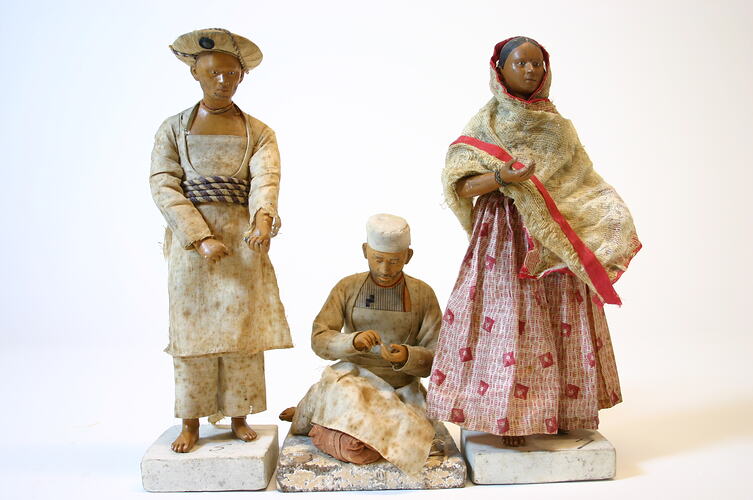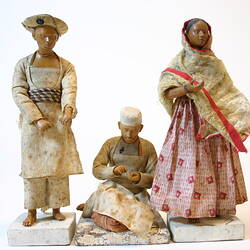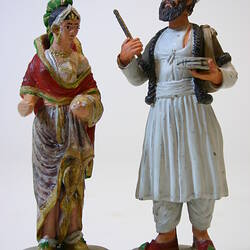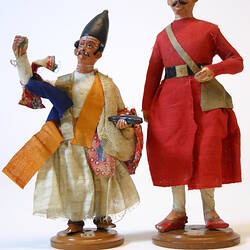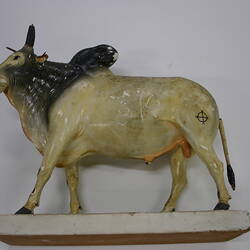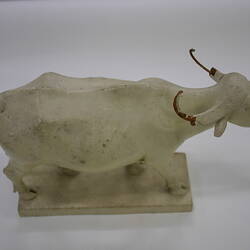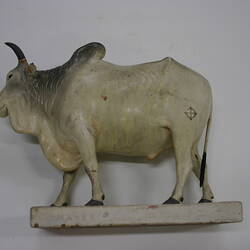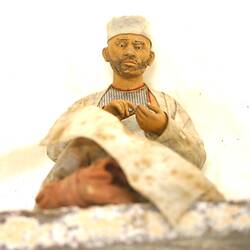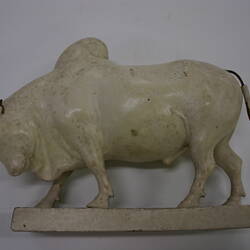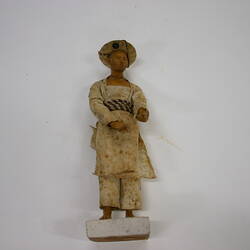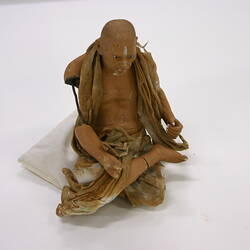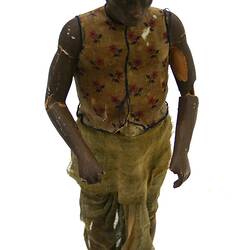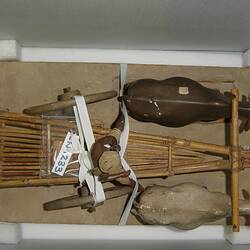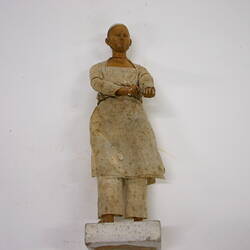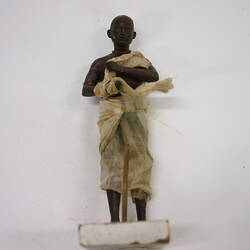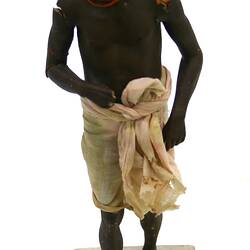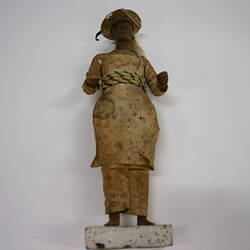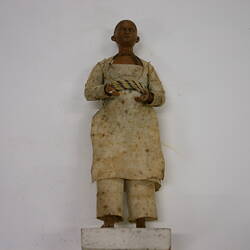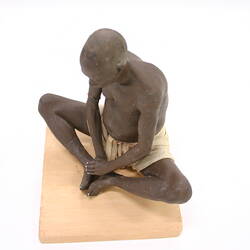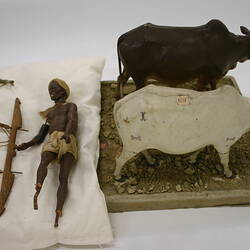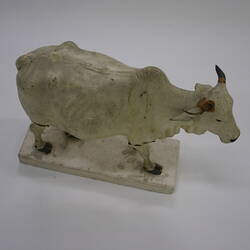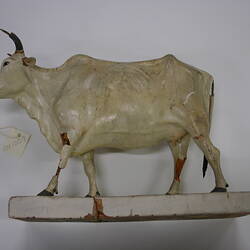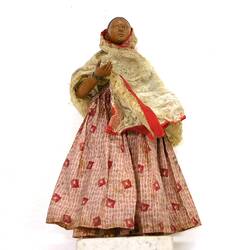Clay modelling has been practised in Krishnanagar (near Calcutta), West Bengal, for over 250 years. Figure modellers were originally brought to Krishnanagar by the higher castes to make stylised idols for religious worship (Ghose, 1981, p.44). The introduction of Barawari Puja (community worship) encouraged a new, more naturalistic style of figure modelling.
Krishnanagar figures are created by modelling coils of clay over a metal armature; clay is mixed with cotton wool for the more detailed, finer features of the model. The figures are attached to modelled clay bases, via the metal armature. They are sun-dried and cracks are filled with paper and tamarind seed or glue. The figures are then painted in naturalistic colours, hair (made of sheep's wool or jute) is attached, and they are dressed in fabric clothing. Similar techniques were (and continue to be) used to create the life-size portraits, though the armature is constructed from wood or straw (Bean, 1990, pp. 30-32).
Distinguished by animated expressions and forms, Krishnanagar figures are so detailed and lifelike that they could have been modelled on actual people: 'there is considerable delicacy and fineness in their work; the figures are instinct (sic) with life and expression; and their pose and action are excellent' (Mukharji, 1888, p. 59). As evidenced by the life-size portraits in the Peabody Essex Museum collection (in Salem Massachusets), Calcutta modellers were very capable sculptors of the human form. The realism of their output was further enhanced by the involvement of specialist tradesmen in some of their creations. For example, on the complex model of an Indigo Factory, created for the 1886 Colonial and India Exhibition (now in Kew's Royal Botanic Gardens collection), skilled craftsmen were commissioned to create parts of the model, such as the thatching on the roof.
Renowned figure modellers during the second half of the 19th century and early 20th century, the zenith of figure modelling in Krishnanagar, were Jadunath Pal (1821-1920), Ramlal Pal, Bakkeswar Pal (1875-1924), Rakhaldas Pal and Candrabhushan Pal (Mukharji, 1888, p.59). Jadunath Pal created a group of figures in Museum Victoria's collection; this group was awarded a second order of merit at the Melbourne International Exhibition in 1880. Collectively these modellers created a variety of models for sale, exhibition and commission and their models were shown and awarded prizes at most of the International Exhibitions after 1851 (Mukharji, 1888). Throughout the late 19th and early 20th centuries several Krishnanagar modelers attended exhibitions, creating models and other items on request; it is reputed that at an exhibition in London in 1924, the Duke of Connaught was so impressed by the life-like appearance of the models he urged the Indian sculptor to model his portrait; the sculptor readily obliged, and the bust was made in less than five minutes. (Bose, 2007)
The Krishnanagar clay figures at the 1880 Glasgow International Exhibition ranged in price from R1,200 for a Tea Garden scene; R150 for a Landlord's court scene; R40 for Theological discussion of Brahmans; R40 for the life-size ethnographic aboriginal Indian figures; and R9 to R12 a dozen for individual miniature figures (Mukharji, 1888).
References:
Melbourne International Exhibition, 1880-1881: Official record containing introduction, history of exhibition, description of exhibition and exhibits, official awards of Commissioners and catalogue of exhibits, Melbourne, Firth & M'Cutcheon Mason.
Bean, Susan (1990). 'Image Makers of Bengal', Ceramics Monthly 38, pp. 30-32.
Bose, Bhupen (2007). 'Famous Clay Dolls of Krisnagar', Kashmir Times Sunday Magazine, July 29.
Das, Soumitra (2008). 'Living Clay', The Telegraph, Calcutta, Sunday June 8.
Ghose, Benoy (1981). Traditional Arts and Crafts of West Bengal: a sociological survey, Calcutta, Arijit Kumar for Papyrus
Mukharji, T. N. 1888. Art Manufactures of India: specially compiled for the Glasgow International Exhibition, 1888, Calcutta, Superintendent of Government Printing.
More Information
-
Keywords
-
Authors
-
Article types
